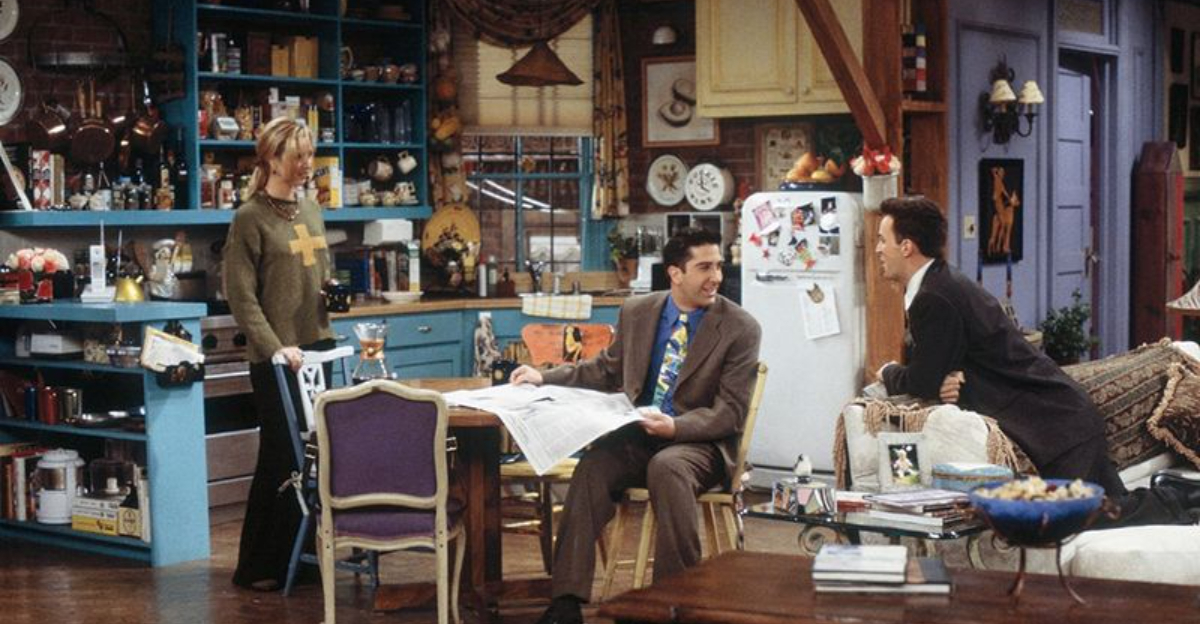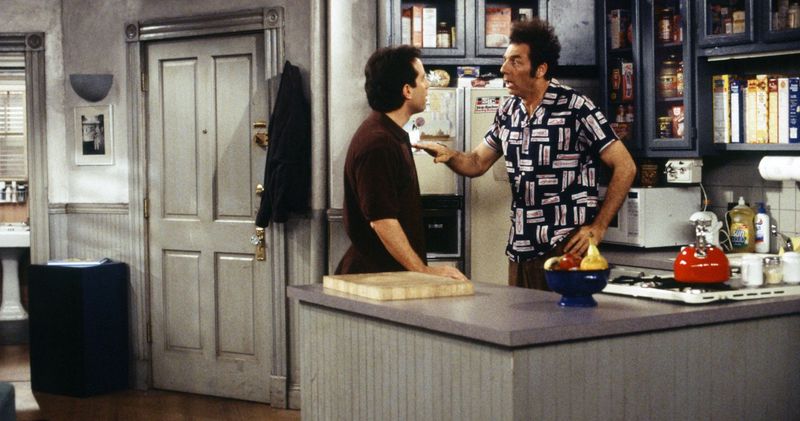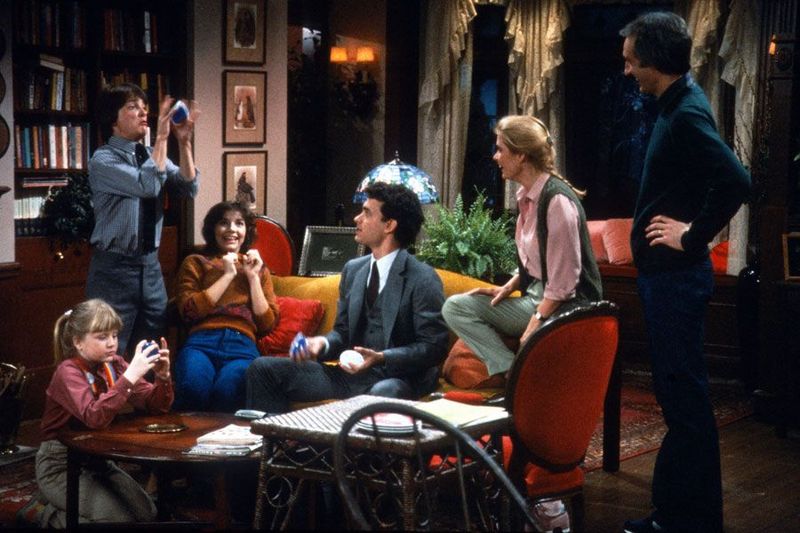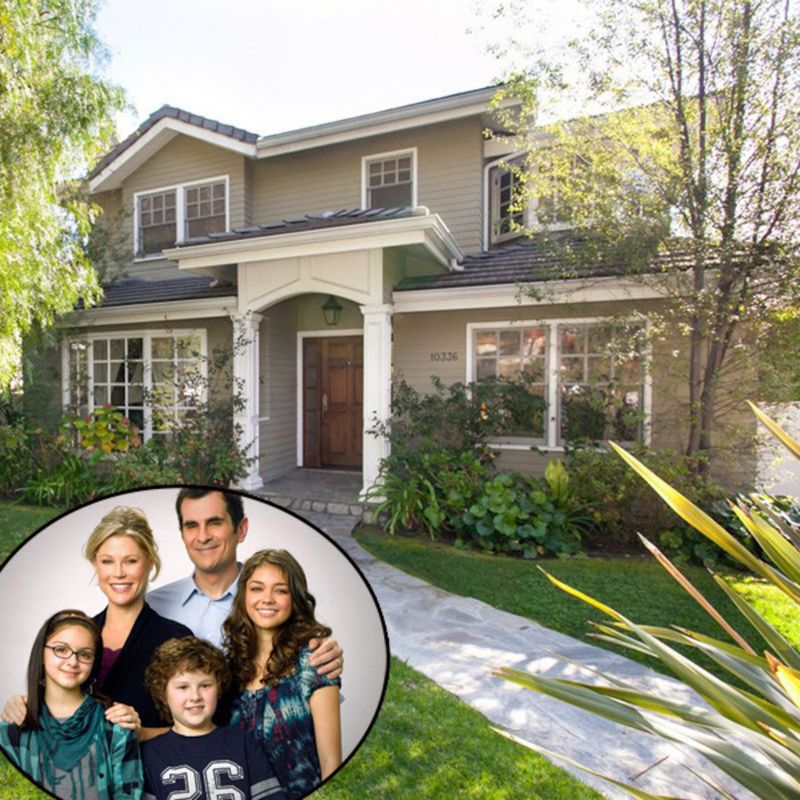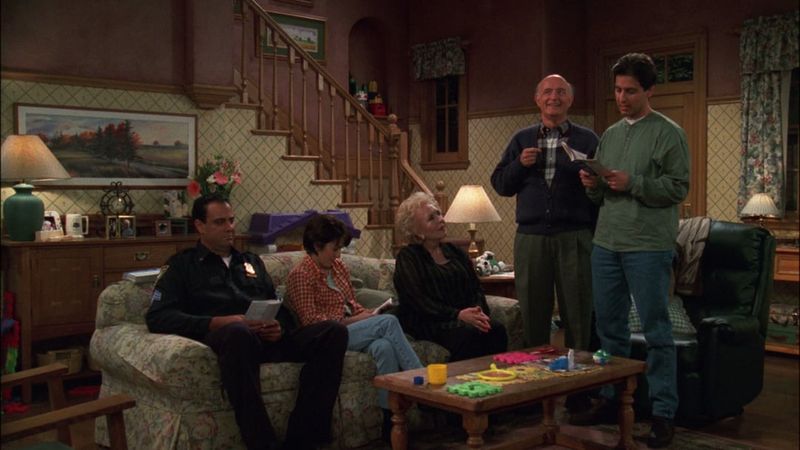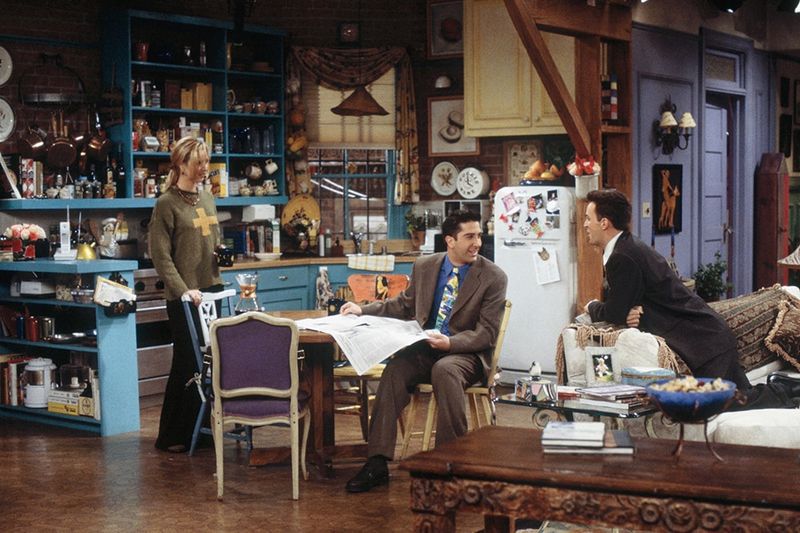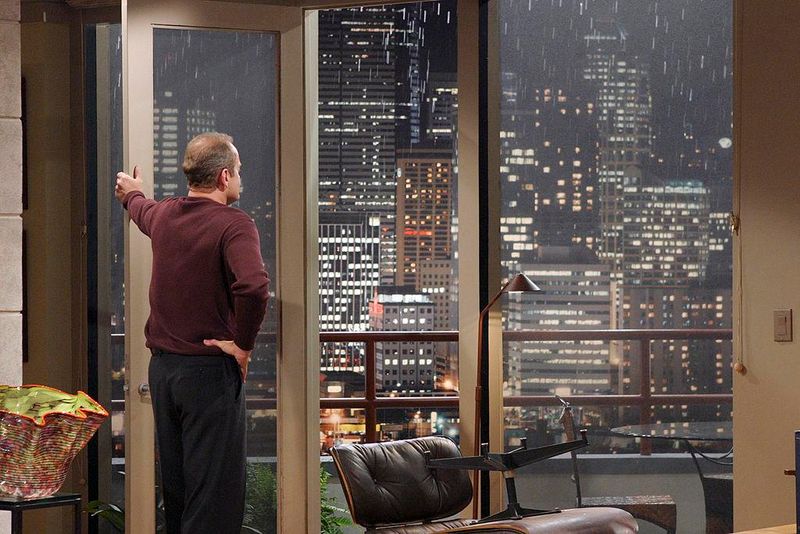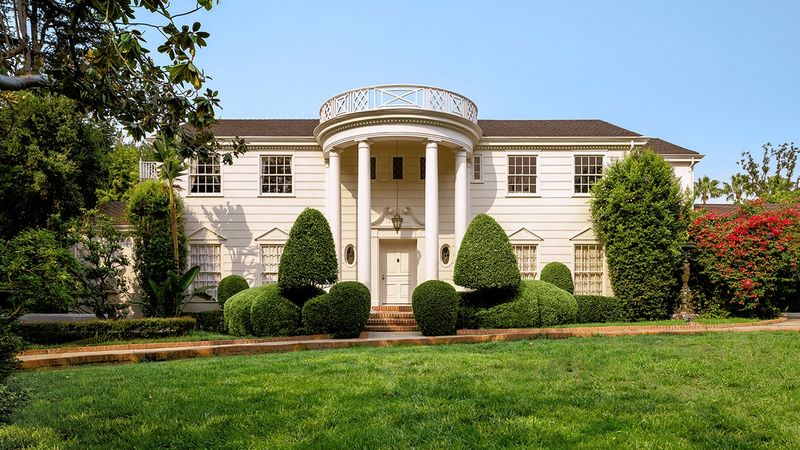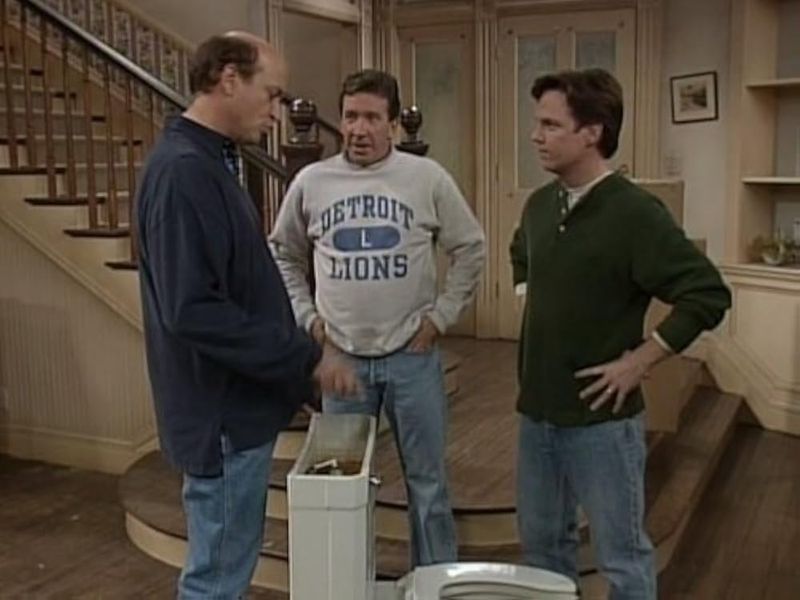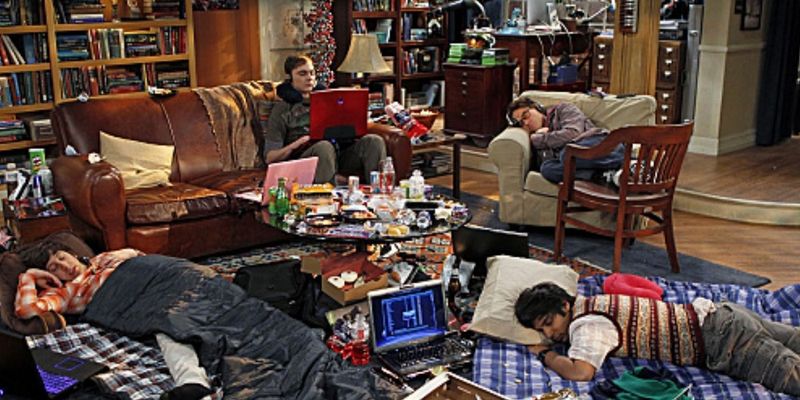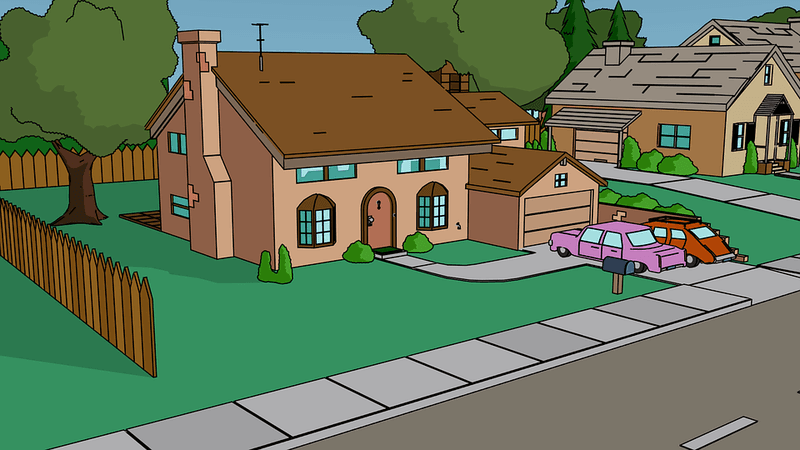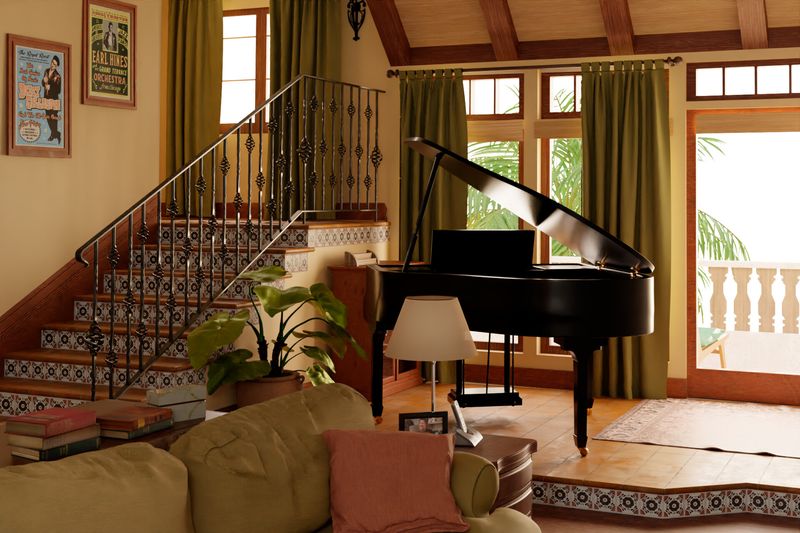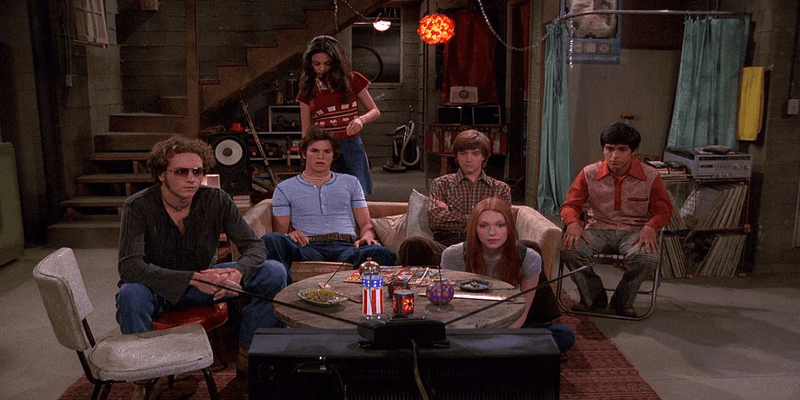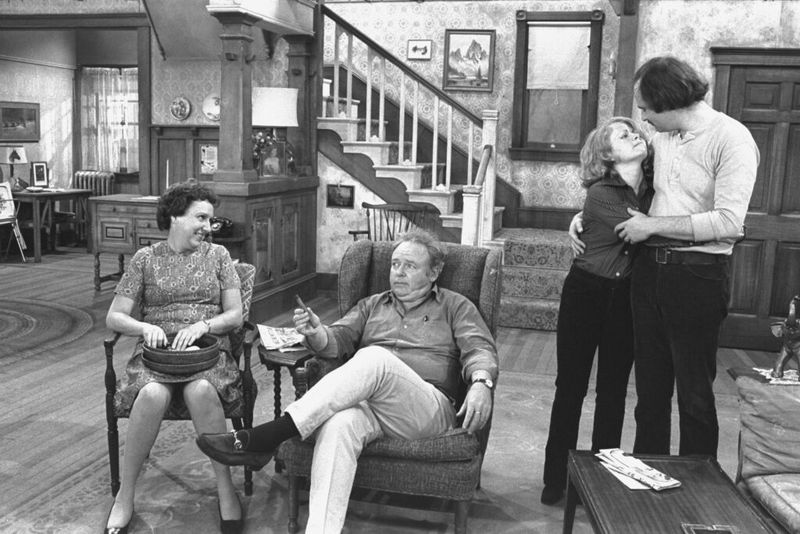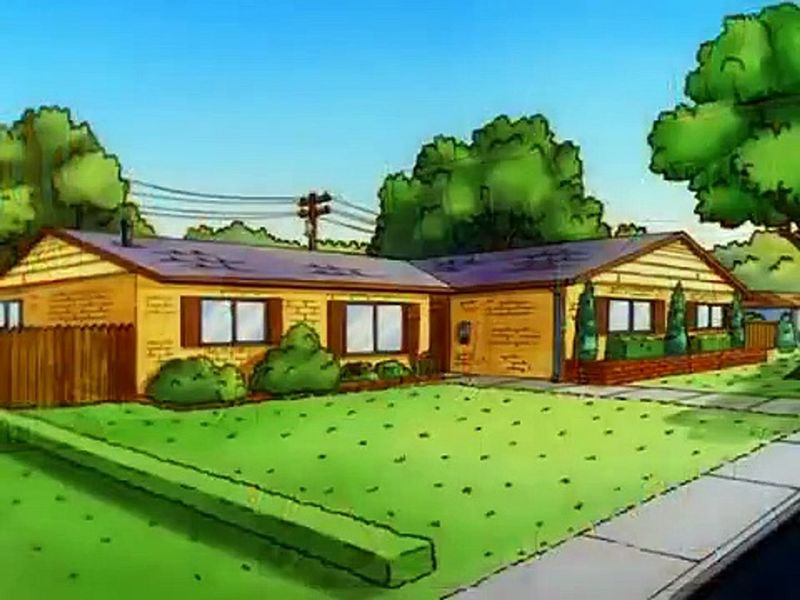Sitcoms have given us some of the most iconic homes in television history—but let’s face it, a lot of them made zero architectural or financial sense. Whether it was an impossibly spacious New York City apartment or a bafflingly laid-out suburban house, these fictional homes defied reality. Still, we all wanted to crash on the couch and live there ourselves. Here are 15 sitcom homes that made no sense—but we loved them anyway.
1. Jerry’s Apartment – Seinfeld
Jerry’s apartment, an iconic Seinfeld setting, mystifies with its spatial inconsistencies. The hallway perplexes with ever-changing dimensions, while the compact kitchen seems unrealistically expansive. Despite being a single-bedroom unit, it remains a hub for spontaneous gatherings and comedic mishaps. The quintessential New York bachelor pad, its mismatched decor and quirky charm reflect Jerry’s lifestyle and humor. The bike hanging on the wall and the view of the city street enhance its authenticity. An enigma wrapped in a snapshot of ’90s New York life, this apartment defies physics yet remains beloved.
2. The Tanner House – Full House
The Tanner house, nestled in San Francisco’s picturesque landscape, unfolds a blend of grandeur and warmth. Its Victorian elegance masks an improbably vast interior, housing multiple bedrooms, an attic apartment, and even a recording studio. Managing nine family members in such harmony seems improbable, yet the whimsical layout supports this notion. The vibrant living areas and eclectic decor foster a sense of belonging, inviting viewers into a world of laughter and love. A cornerstone of family sitcoms, this home, though defying financial logic, embodies the essence of togetherness and nostalgia.
3. The Keaton House – Family Ties
The Keaton house, a gem of suburban charm, enchants with its cozy yet baffling design. Multiple bedrooms, a full-sized kitchen, and a warm living room defy the modest exterior. Its whimsical layout echoes the complexities of family life, creating an inviting atmosphere for both laughter and lessons. The mix of modern and traditional decor reflects the Keaton family’s dynamic, blending nostalgia with progressiveness. Somehow, this compact home accommodates it all, resonating with viewers as an emblem of familial bonds and generational growth, despite its questionable spatial logic.
4. The Dunphy Home – Modern Family
The Dunphy home embodies California charm with its expansive layout, tastefully decorated interiors, and manicured garden. This suburban oasis, home to a bustling family of five, seemingly defies the financial realities of a real-estate agent and a stay-at-home mom. Its open-plan design fosters connection and chaos alike, hosting countless family moments. From the vibrant living spaces to the serene garden retreat, the house is as much a character as the family itself—a fantasy of functionality and style, capturing the complexities of modern family life.
5. The Barone House – Everybody Loves Raymond
The Barone house, nestled in suburban Long Island, puzzles with its seemingly infinite space. From a generous kitchen to a commodious basement, this compact home defies expectations. Hosting an Italian-American family, its rooms adapt for every comedic mishap and family gathering. The welcoming decor mirrors the warmth and quirks of its inhabitants, resonating with viewers through its depiction of everyday life. Despite its spatial contradictions, this home embodies the essence of familial love and dysfunction, cementing its place in sitcom history.
6. Monica’s Apartment – Friends
Monica’s apartment in the heart of Greenwich Village challenges logic with its generous space, vibrant tones, and inviting charm. On a chef’s salary, affording this expansive two-bedroom, complete with a balcony and open kitchen, seems like fantasy. Yet, the rent-controlled magic of New York City in the ’90s makes it a character within the show. Hosting countless gatherings, this apartment’s quirky furnishings and vivid interiors captivate viewers, creating a cozy, lived-in atmosphere. A dream urban sanctuary, it defies reality while embodying the essence of friendship and shared moments. Who wouldn’t want to steal a moment on that iconic balcony?
7. Frasier’s Apartment – Frasier
Frasier Crane’s apartment, perched high in Seattle, epitomizes sophisticated luxury. Its floor-to-ceiling windows frame the city skyline, illuminating a space adorned with tasteful art and a grand piano. As a radio host, affording such elegance seems implausible, yet this abode beautifully captures Frasier’s refined yet quirky nature. The blend of modern design and classic touches creates a setting ripe for intellectual banter and personal musings. Defying financial reality, this apartment remains an iconic backdrop for exploring themes of identity, culture, and humor.
8. The Banks Mansion – The Fresh Prince of Bel-Air
The Banks mansion in Bel-Air dazzles with opulence and ever-changing interiors. Its expansive rooms and elegant staircase embody wealth, yet the layout morphs to suit every plot. This majestic home, serving as a cultural crossroads, embraces Will’s vibrant spirit. Its grandeur and hospitality welcome viewers into a world where tradition meets modernity. The lush garden and poolside retreats provide backdrops for laughter, lessons, and growth. A symbol of aspiration and family unity, this mansion, though fluid in design, remains timelessly captivating.
9. The Taylor House – Home Improvement
The Taylor house, a suburban Detroit staple, intrigues with its ever-evolving layout. The backyard and garage morph with each project, echoing Tim “The Toolman” Taylor’s inventive spirit. Its cozy interiors, filled with tools and laughter, reflect the chaos and warmth of family life. Despite its spatial inconsistencies and financial improbabilities, the home embodies the show’s themes of innovation and domesticity. A backdrop for comedic mishaps and heartwarming moments, this house captures the essence of home improvement in both structure and spirit.
10. Sheldon and Leonard’s Apartment – The Big Bang Theory
Sheldon and Leonard’s apartment in Pasadena captivates with its chaotic charm and baffling layout. The floor plan shifts with every plot twist, creating an illusion of endless space in a modest unit. Its cluttered decor, from whiteboards to comic book posters, reflects the tenants’ eccentric personalities and intellectual pursuits. The kitchen’s peculiarities and the mysterious hallway intrigue viewers, bringing humor to daily interactions. Despite its spatial inconsistencies, this apartment remains a beloved setting for exploring friendship, science, and the quirks of modern life.
11. The Simpson House – The Simpsons
The Simpson house, a staple of animated suburbia, defies logic with its expansive layout and unpredictable design. As a nuclear plant technician, Homer Simpson’s ability to afford this four-bedroom home challenges reality. Yet, its vibrant interiors, from the pink car to the quirky decor, embody the family’s unique charm. The backyard serves as a playground for antics and adventures, while the home acts as a canvas for satire and social commentary. Despite its cartoonish elasticity, this house remains relatable and iconic, capturing the essence of family life.
12. The Harper House – Two and a Half Men
The Harper house in Malibu dazzles with beachfront luxury that belies economic sense. A jingle writer’s residence featuring ocean views, a sandy backyard, and a sleek modern interior captures attention. This opulent abode, a playground for indulgence and mischief, serves as the backdrop for humorous escapades and familial drama. With its contemporary design and breezy atmosphere, it embodies a carefree lifestyle. Though financially unrealistic, the house’s allure lies in its blend of extravagance and cozy familiarity, making it an unforgettable part of television lore.
13. The Forman Basement – That ’70s Show
The Forman basement, a sanctuary for teenage rebellion, enchants with its retro vibe. Despite being just a basement, it miraculously hosts couches, a bar, and a rotating cast of adolescents. The wood-paneled walls and vintage decor evoke nostalgia for a simpler era. Red’s obliviousness to its transformation into a hangout hub adds comedic flair. This subterranean retreat, though spatially improbable, captures the essence of youth and camaraderie. A cornerstone of ’70s nostalgia, the basement remains an iconic setting for laughter and life lessons.
14. The Bunker House – All in the Family
The Bunker house, a staple of ’70s television, puzzles with its cramped yet ever-changing interior. Doors lead nowhere, and the kitchen morphs with each episode, creating a sense of spatial fluidity. Its modest decor and lived-in feel reflect the era’s sensibilities and economic realities. Despite its peculiarities, the house serves as a battleground for social discourse and character development. Archie and Edith’s dynamic infuses warmth and tension, making this abode a beloved yet bewildering slice of American life.
15. The Hill House – King of the Hill
The Hill house, with its classic Texas suburban vibe, defies logic through animated adaptability. The rooms expand or vanish as plot demands, creating a flexible living space for the Hill family. The modest decor and quintessential American yard, complete with a propane grill, underscore Hank Hill’s traditional values. Despite its morphing nature, the house embodies everyday life, capturing humor and heart against the backdrop of Arlen. A cartoon haven, it remains a testament to the quirks and charms of animated storytelling.
